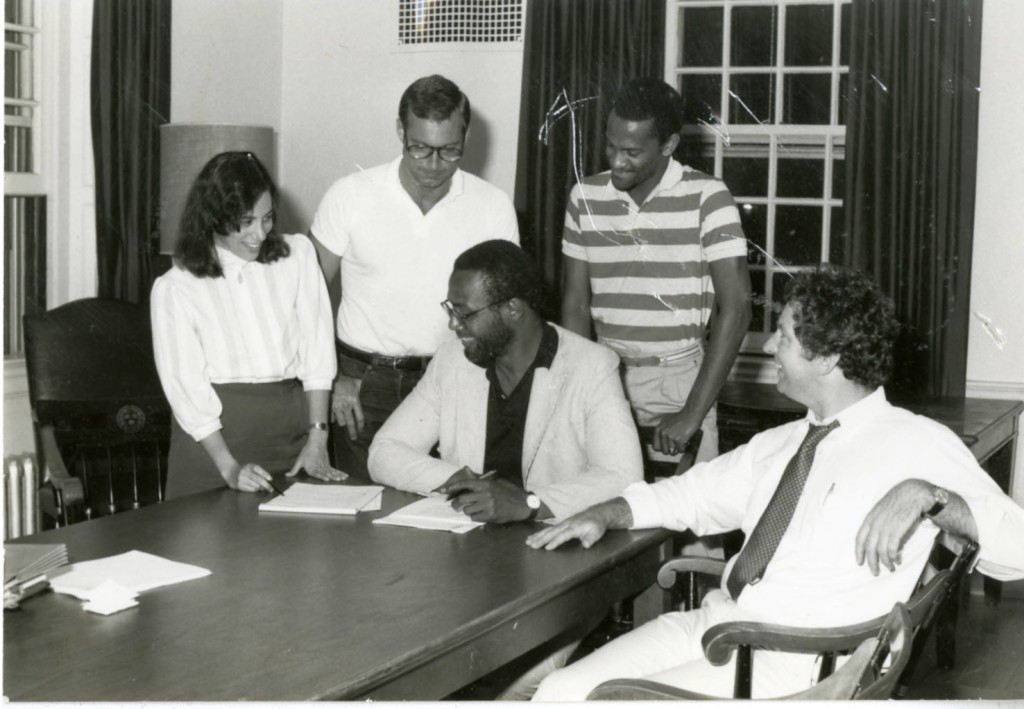
We are pleased to announce that the Kenneth E. Reeves Papers, 1982-2019 is now available for research. A selection of digitized material is also available.
Biography
Kenneth E. Reeves was born in 1951 in Detroit, Michigan and first moved to Cambridge to study at Harvard University as an undergraduate. He graduated from Harvard in 1973. After attending law school at the University of Michigan, Reeves returned to Cambridge and practiced as a lawyer while becoming involved in local politics. In 1990, Reeves was elected to the Cambridge City Council and later served as the city’s mayor between 1992-1995 and 2006-2008. When first elected mayor, Reeves became the first openly gay African American mayor in the United States.
During his time on the city council, Reeves was a member of the Cambridge Civics Association Slate and the Working Committee for a Cambridge Rainbow.
Collection Overview
Ranging from 1982-2019, this collection contains documents, photographs, and ephemera from Kenneth Reeves’ campaigns, terms as councilor and mayor, and personal life. The first two series of this collection contain a large range of campaign material, clippings and stories from local and national magazine and newspapers about Reeves, a small number of agenda from meetings, and a small number of photographs. The third series, composed of Reeves’ personal items, contains a large number of photographs of St. Paul AME Church’s Christmas performance of the Messiah from 1982 and 1983, as well as two portraits of Reeves, one painted by local citizen Al Sayles and one by acclaimed artist Gale Fulton Ross.
